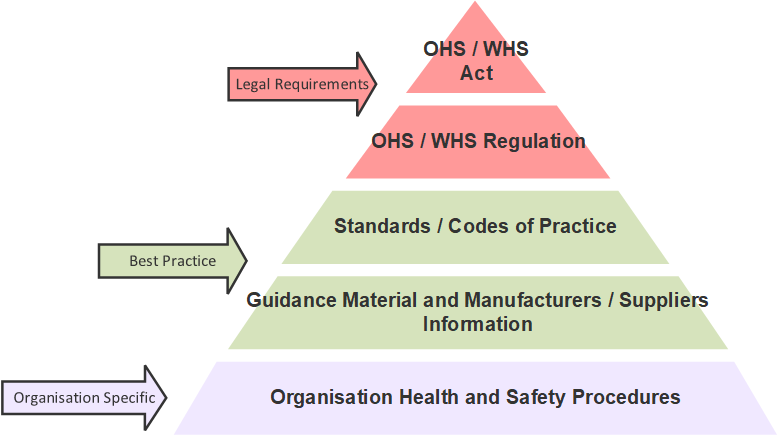The Health and Safety Framework
To maintain a safe workplace, organisations must understand and implement the Health and Safety Framework.
The Health and Safety Framework contains the following:

Legal Requirements
Health and Safety Legislation
Health and safety laws are designed to protect workers’ health, safety, and welfare. Employers must comply with these laws by ensuring their workplace is safe for all employees and visitors.
Under health and safety law employees have the right to:
- A safe working environment
- Safe ways of working
- Access to safety equipment and training
- Participation in health and safety discussions
Employers and employees share responsibilities in adhering to these guidelines.
Safe Work Australia
Safe Work Australia (SWA) is a national policy body that works to develop and maintain WHS policies. It operates in partnership with federal, state, and territory governments and plays a key role in:
- Developing national policies and strategies
- Evaluating the model WHS legislative framework
- Conducting research
- Reporting data on workplace health and safety
Safety Authorities
Each Australian state and territory has its own Safety Authority to enforce workplace health and safety laws. These include:
- SafeWork NSW
- WorkSafe Victoria
- SafeWork SA
- NT WorkSafe
- Workplace Health and Safety Queensland
- WorkSafe Tasmania
These authorities ensure that employers are meeting their legislative responsibilities.
Employers’ Responsibilities
- Provide a safe and healthy workplace for employees and people visiting their places of work who are not employees (customers, contractors, visitors)
- Identify safety issues and/or hazards
- Reduce risks or dangers for workers
- Support the health and safety consultation and communication
- Train and inform workers about health and safety
- Provide safe methods of working for each job
- Provide the appropriate tools for the job (plant / equipment, safety equipment, protective clothing)
- Maintain equipment to reduce risk of injury
- Maintain safe entrances and exits
- Make available to workers the information about research and relevant materials or substances used in the workplace
Employee’s Responsibilities
- Perform work in a safe manner
- Observe the safety of other employees and workers
- Report health and safety issues / hazards
- Assist other employees to follow health and safety policies and law
- Use and/or wear protective equipment appropriately
- Give reasonable assistance in the case of an accident
Best Practice
Standards and Codes of Practice
Best practice standards, including International and Australian Standards like ISO 45001:2018, guide organisations in implementing high-quality health and safety systems. These standards, alongside industry-specific Codes of Practice, provide a solid foundation for developing safe workplace policies and procedures.
Guidance Material and Manufacturers / Suppliers Information
Organisations should use guidance material from safety authorities, as well as information provided by manufacturers, such as equipment manuals and Safety Data Sheets (SDS), to ensure equipment and chemicals are used safely. This is vital for developing compliant health and safety systems.
Organisation Specific
Organisation Health and Safety Procedures
Your organisation’s specific health and safety procedures should be tailored to its operations while complying with legislation and best practice standards. This includes creating necessary forms, checklists, and registers to form a comprehensive health and safety system.
** Please contact us using our Contact Us link for more information or to discuss your organisation’s health and safety requirements.
